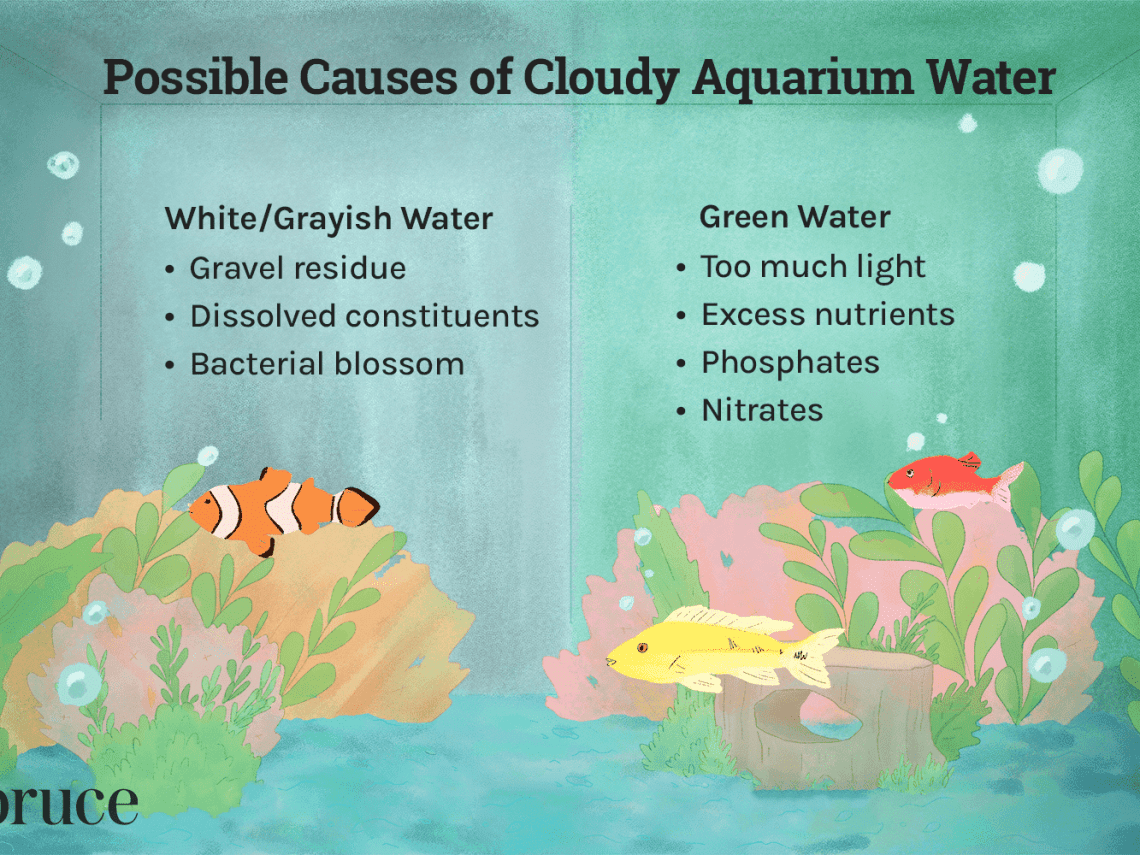
What to do if the water quickly becomes cloudy in the aquarium, why this happens and how to deal with it
Breeding aquarium fish is a hobby of many. It is always a pleasure to watch underwater life, and even at home. No wonder many psychologists recommend watching the aquarium to calm your nerves and improve your mood. But releasing fish into the water is far from the main task. Without proper care and attention, life in an aquarium can quickly disappear. And here it is important not only to feed the fish, but also to keep the water clean. This article will talk about the causes that lead to cloudy water and how to solve this problem.
Contents
The water in the aquarium quickly becomes cloudy: reasons
Many aquarium fish lovers notice that when buying a new aquarium and filling it with water, it quickly becomes cloudy. Why is this happening? The reason for this phenomenon rapid growth of microorganisms. Once in a new environment, there is a rapid growth of bacterial colonies, which causes a change in the transparency of the water in the aquarium.
As a rule, this passes quickly. After a week, the water will again become transparent, biological balance will come. That is why after filling a new aquarium with fresh water, it is not recommended to immediately release the fish. It is better to wait until the peak of reproduction of microorganisms passes, and the medium becomes transparent again.
The best option when purchasing an aquarium is to fill it with water from the old one. In this case, there will already be a formed microclimate, and the water will not become cloudy. It is also not recommended to change the water, this will lead to an imbalance.
But even in an old aquarium, where its own microclimate and fauna have already formed, the environment may no longer be transparent. Typically, this leads to two main reasons:
- excess feed. If you pour more food into the aquarium than the fish can eat, then it will settle to the bottom. As a result, the environment will become cloudy due to debris and due to rapidly multiplying bacteria;
- bad filtering. When there are few fish in the tank, and there is enough space for everyone, then poor filtration has little effect. Another thing is when the territory is densely populated. In this case, due to poor water purification, decay products will remain in it (from food residues or from waste products of the inhabitants of the aquarium). As a result, the water will quickly become cloudy and fish, and other populations can quickly die.
Sometimes the transparency of the aquarium can be spoiled by algae growth, and it starts to smell bad from there. In this case, they say that liquid “bloomed”. Several reasons can lead to this:
- excessive lighting. Algae begin to multiply rapidly;
- lack of lighting. If there is little light, then the algae die off and begin to rot;
- a large amount of organic residues at the bottom. It also leads to the growth of microscopic algae.
If the environment in the aquarium began to become cloudy or “bloomed”, then this must be urgently dealt with. Otherwise, you can destroy all its inhabitants.
Dealing with muddy water
If the environment in the aquarium has become cloudy, then the cause of this phenomenon is eliminated first. With overcrowding enhanced filtration system. If this is not possible, then it is necessary to resettle some of the inhabitants to another place.
When feeding, make sure that all food is eaten. If its remains are noticed at the bottom, then the amount of food must be reduced. There is another option to cope with such a problem – this is to add bottom fish to the aquarium. They will eat the remnants of food accumulated at the bottom and will not allow the water to become cloudy.
When the “blooming” of the aquarium (rapid reproduction of algae) it is necessary reduce illumination. For example, move it to a darker corner of the room or install a screen. If the algae began to rot from a lack of light, then additional lighting should be provided.
Algae overgrowth can be dealt with in another way. Add fish that feed on vegetation to the aquarium world or launch snails. They will quickly deal with the thickets.
In general, keeping the correct biological balance in the aquarium is the most important thing. The health of all inhabitants will depend on the purity of the habitat and the correct balance of microflora in it.
There are special additives on sale, with the addition of which (according to the manufacturers) the balance is quickly restored. But most aquarists do not use them. Nevertheless, such drugs, although safe, are still chemistry. It is better to properly set up the cleaning and lighting system, and also to prevent overcrowding of the aquarium. And then the liquid will not smell unpleasant and quickly become cloudy.
Do I need to make a replacement?
Having dealt with the question of why aquarium water becomes cloudy, you can talk about replacing it. Some will think: is it necessary to change it at all? Turns out, replacement neededbut you have to do it carefully.
If the aquarium is just running, then you should not change the water in it for 2-3 months. During this time, it will form its own microclimate. Then you can gradually change the water. This is done every 15-30 days (depending on the efficiency of the filter system). In this case, the volume of new water should not exceed one fifth of the capacity of the aquarium. Even such a replacement will lead to a slight imbalance, which will completely disappear only on the second day.
If you change the water more often or do it in large volumes, you can damage an established biological system. As a result, the inhabitants of your underwater world may die.
Experts even recommend making replacements less frequently than every month, of course, subject to the normal operation of the filters and cleaning system. In this case, the fish will feel good and the water will not become cloudy and will not smell bad.





